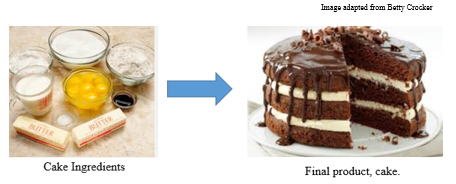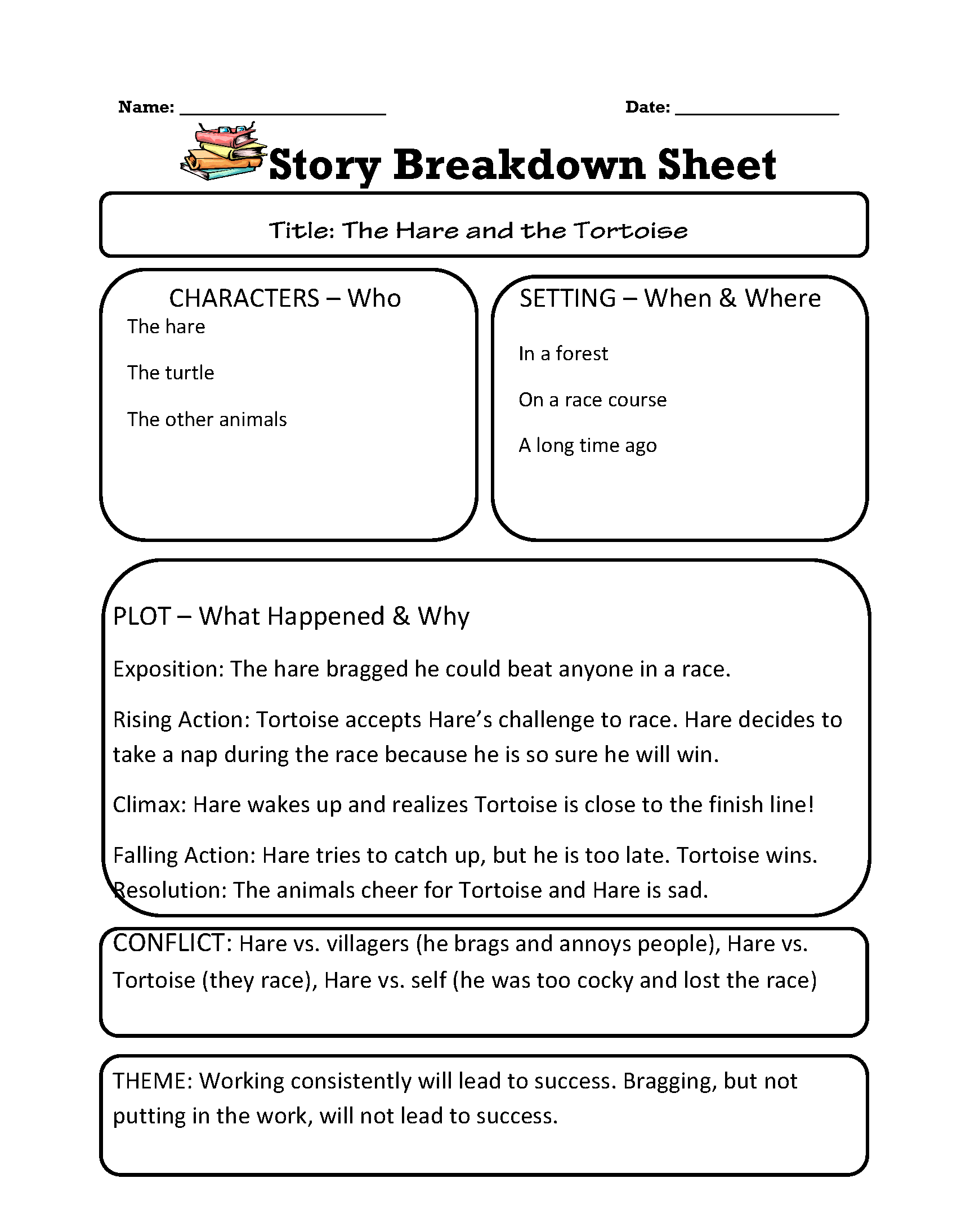2.4 Explore Elements of a Short Story
| Site: | Cowichan Valley School District - Moodle |
| Course: | ELA5, CSS, Sferrazza |
| Book: | 2.4 Explore Elements of a Short Story |
| Printed by: | Guest user |
| Date: | Monday, 22 December 2025, 2:25 AM |
Description
Can you...

Learning Targets
By the end of this lesson, you should be able to say YES to the following questions.

- Can I understand the definitions of key elements of a story?
- Can I identify key elements of a story and understand their importance?
- Can I read a story and identify the setting, character, theme, plot, and conflict?
A Recipe for the Elements of a Story
 So to help you remember the elements of story, first imagine a chef baking a big cake.
So to help you remember the elements of story, first imagine a chef baking a big cake.
The chef is a key player because the story won’t get made without someone to mix all the ingredients together. Think of the chef as the main character of the story. Anyone helping in the kitchen or who will be eating the cake can be seen as the other characters in the story.
Think of the frosting on the cake as the setting. It is the outside exterior that everyone sees.
Think of the frosting message written on the cake as the theme. This is the message the chef wants delivered to the people eating the cake. It is the reason why the cake was made. It could range from "Happy Birthday!" to "Congratulations!"
Think of the layers of cake as the plot. The tiers of the cake going up and up are the rising action with the top layer of the cake being the climax of the story.
Think of the little figures on the top tier as representing the point of view. Whoever is situated there, it is their point of view the story is told from.
The cake won’t bake up without heat! Think of the heat from the hot oven as the conflict. It’s what causes the cake's ingredients to cook up a delicious treat for the reader.
 Now get creative and do Cooking Up the Elements of a Story activity.
Now get creative and do Cooking Up the Elements of a Story activity.
Story Breakdown Practice
A fable is a very short story that teaches a life lesson. Talking animals are often the main characters. Examples are the The Ant and the Grasshopper or The Boy Who Cried Wolf.
You will be reading the fable The Hare and the Tortoise on the next page.
Use your pre-reading strategies first.
 Then, go to your Learning Guide and then fill out Story Breakdown as you read the story a second time. Read the story a third time (or more) to make sure you've filled out the sheet as best you can.
Then, go to your Learning Guide and then fill out Story Breakdown as you read the story a second time. Read the story a third time (or more) to make sure you've filled out the sheet as best you can.
The Hare and the Tortoise

ack to a time long ago, there lived a hare who liked to boast of his speed to any of the animals in the forest who would listen to him.
"I have never yet been beaten!" Hare said. "When I put forth my full speed, no one can beat me. I challenge anyone here to race with me."
Tortoise said quietly, "I accept your challenge."
"That is a good joke," said the hare. "I could dance round you all the way to the finish line."
"Keep your boasting till you've beaten me," answered the tortoise. "Shall we race?"
So a course was fixed and a starting point was made. All the animals came out to watch.
Hare darted almost out of sight at once, but soon stopped. To show his contempt for Tortoise, he decided to lie down to have a nap. He fell asleep without a worry.
Tortoise plodded on and plodded on. He did not go very fast, but he never stopped. When Hare awoke from his nap, he was shocked. He saw Tortoise just near the winning-post. He started running right away. Despite all his strength and speed, Hare could not run fast enough to catch up.
Tortoise crossed the finish line and the other animals cheered for him. Then said Tortoise, "Plodding wins the race."
Story Breakdown Check
You can check your understanding of the story elements of The Hare and the Tortoise here.

Your Turn!
 Now it is your turn to find three other fables to read and analyze using the Story Breakdown sheets provided in your Learning Guide. If you don't want to do fables, you can choose fairy tales or other short stories that you have access to. You can find the tales online (with adult approval) or you can go to your local library and take out fables either in an individual book or in a collection.
Now it is your turn to find three other fables to read and analyze using the Story Breakdown sheets provided in your Learning Guide. If you don't want to do fables, you can choose fairy tales or other short stories that you have access to. You can find the tales online (with adult approval) or you can go to your local library and take out fables either in an individual book or in a collection.
Here are some websites with stories you can check out:
Elements of a Story - Practice
Make sure you fully understand the elements of a story that were covered in this unit - setting, character (including protagonists and antagonists), plot (elements of plot), conflict (types of conflict and able to recognize examples) and theme. Use the games below for more practice.
--1-- |
--2-- |
Once you have completed this section and studied the elements of a story, then go to the Elements of a Story Quiz and complete it.